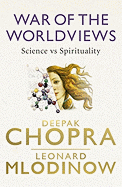Love Aajkal

India has had a deity of Love ‘Kaamdev’ for millennia. The power of love has been captured for centuries in the Indian sub continent by many poets and playwrights. Love was in the air in ancient India and the whole sub-continent was ablaze with the love and its different shades. Love in India has been made perennial through her poems, plays, characters and ancient monuments. Then came the Taj and now Valentine’s Day.
Valentine’s Day celebration is a recent trend in India and has caught the fancy of people, especially the younger generation. Even the orthodox have now started to note 14th February in their little personal diaries. Thanks to media and consumerism, we find Valentine’s Day slowly getting mainstreamed in India.
One of the established Indian dating sites Indian ‘Friend Finder’, says that February is the most popular month for new registrations to their website. But even before the import of this day from the West, Indians have always had a deep sentiment of love and don’t turn away any occasion to express love. It’s not surprising that our Indian cinema is overflowing with love and its sentiments in its stories, music and lyrics.
Former Bollywood superstars like Rajesh Khanna were heartthrobs of millions just riding on the love emotion. A movie like ‘Ek Duje ke liye’ was such a ‘super-duper’ hit that many passionate young lovers who were not successful in getting married due to society’s norms emulated the tragic ending of the movie even to the extent of embracing death.
Every Indian regional language has a classic love story based movie or book. There are numerous folk tales of legendary lovers who kissed death with a promise to meet in heaven. Heer Ranjha, Mirza Sahiba, Sassi Punnun and Sohni Mahiwal are some popular tragic romances from the Punjabi lore. These fables have fuelled our imagination, engage our emotions, sense and sensibility, and above all, entertain us.
There is an amazing variety of fabled love stories that abounds in Sanskrit literature, which is undoubtedly one of the richest stockpile of stirring love legends. Robert A. Johnson a world-renowned Jungian analyst, lecturer, and author of the bestsellers remarks in one of his books ‘The Fisher King and the Handless Maiden’ that
“Sanskrit has ninety-six words for love; ancient Persian has eighty, Greek three, and English only one. “
The power of love has been captured for millennia in the Indian sub continent by poets. India has always had its share of some fantastic love stories and poems in Sanskrit are a testimony to that. Tales like Nala Damayanti, Satyavan-Savriti which are part of the Mahabharata epic and plays by poet Kalidas (340 BCE), among many others are truly love based. Kalidas bases the entire plot of his dramas title ‘Shakuntala, ‘Abhignanshakuntala’ around the shades of remembering and forgetting the most loved ones. So is his love poem ‘Meghdhutam’ where the antithetical modes of love-in-separation (Vipralambha) and love in-union (Sambhoga) are painted in some sublime Sanskrit language. Though every country has a history of lovers and literature on love, India has some really enduring and captivating examples of love poetry celebrating the joys and sorrows of love in all its forms and fashions.
There are all sorts of love experiences, in these poems, as in separation and in union, before and after marriage, in chastity and betrayal. Love poetry has been a staple of literature on the subcontinent…..
Obviously love was in the air in India and the whole sub-continent was ablaze with the love and the pangs of passion. The story of Cupid Kamadev was known to many as it was taught through the early Puranas. Since antique times, rishis in India have believed that it was love, which came first and then followed the world.
Even during the Indian traditional marriage ceremony itself, the bride’s feet are often painted with pictures of Suka, the parrot vahana of Kamadev. Astrologers even prescribe the Kamadev mantra to fulfill desires of getting into a relationship and marriage. Given all that information about Kamadev, ancient Indians also knew about the lessons in love making as in Sage Vatsyayana’s Kama Sutra.
Love and love-making have also been graphically sculpted in Khajuraho and Konarak temples. Cave paintings, archaeological findings and a mass of literature belonging to the Vedic and Buddhist eras to give a complete portrayal of love.
In the introduction to his book ‘ Love in Ancient India’, M.L.Varadpandean eminent scholar and theatre historian in India claims that the first love story of the world was found in the Rig Veda and the first comprehensive work on love was written in India with Kamasutra becoming one of its offshoots. There are different shades of love talked about in the Indian sub-continent starting from carnal love as in the Kama Sutra to the sublime transcendental love as in sage Narada’s ‘Narada Bhakti Sutras‘ which are aphorisms on love supreme.
Even contemporary Gurus like H.H. Swami Chinmayananda have declared about Love …
“Love is the heart of all religions; the theme of all classical works of art and literature; the song of all devotees. Scientists know only what love does, not what love is. Love is to human hearts what the sun is to flowers. We like someone “because of”, but we love someone “in spite of…”
Love poetry was a known subject to the educated people of India. Only if our kids and youth were educated about India’s heritage of love and being love-rich, they would be rooted in their own emotional wellness and yet be secular in celebrating Valentine’s day openly in a typical Indian acceptance of all world cultures.






